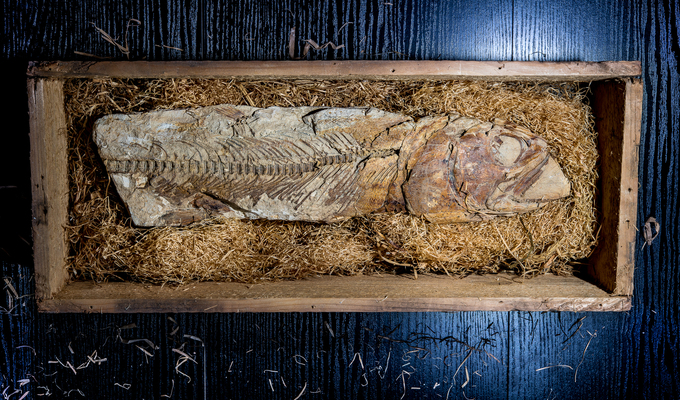The history of the paleontological collection reaches back to the beginnings of the National Museum. It is no wonder, as the museum’s spiritual father was the palaeontologist Count Kaspar Maria von Sternberg, who presented the newly founded institutions with all of his collections and his scientific library. The museum’s collecting and scientific activities intensified in the mid-19th century under Antonín Frič, who is considered the founder of the museum’s department of geology and palaeontology. He became its director in 1864. Under his leadership, the large volume of palaeontological material from the Palaeozoic and Cretaceous eras in the Czech lands was acquired and published. The Cretaceous flora was processed by Josef Velenovský and later by Edvín Bayer. A really fundamental donation came in 1884, when the will of the French palaeontologist, Joachim Barrande, was opened. This French scholar, who lived in Bohemia for over half a century, bequeathed the museum a collection numbering 300,000 items, a large library, in-the-field documentation, and 10,000 guldens for the completion of his extensive work "Systeme silurien du centre de la Boheme”.
The most striking figure of the interwar period, when the department was being developed, was the palaeobotanist František Němejc. He joined the museum in 1924, and through his intensive collecting and scientific work deeply influenced all activities in the department. He greatly enriched the palaeobotanical collection, focusing primarily on Quatenary and Carboniferous flora. The museum’s zoopalaeontological collection was gradually expanded by the systematic collecting of Jan Koliha, Bedřich Bouček and Ferdinand Prantl, who published material from the Czech and Moravian Paleozoicum and described a large number of new taxa.
World War II badly impaired the activities of the department of geology and palaeontology. Due to the threats imposed, the most valuable collection material was transferred to the castle in Kopidlno, and other material, including the library, was transferred to the cellars. These prudent measures saved a large number of collections, primarily the department's library, from destruction during the German air raids on 8 May 1945.
In the post-war period, the department, initially under František Němejc and later Vlastimil Zázvorka, expanded successfully, and so did the department’s fonds, thanks to the collecting activities of František Němejc, Ferdinand Prantl and Vlatislav Zázvorka, and also the staff of other institutions. Among these are Vladimír Havlíček, Milan Šnajdr, Jiří Kříž, Rudolf Prokop, Alois Přibyl, J. Vaněk.
In 1964, as part of internal reorganization, the Natural History Museum was founded. During this reorganization, the department of geology and palaeontology was transformed into the department of palaeontology. It was 100 years after the first use of this name based on Frič’s request to the Management Committee of the Society of the Museum of the Kingdom of Bohemia.
Since the 1960s, new type material for phytopalaeontological works by František Holý, Zlatko Kvaček, Čestmír Bůžek and Ervín Knobloch has been regularly stored in the museum. The situation was similar with palaeozoology. Here, we must mention the life-long work of Radvan Horný, Rudolf Prokop, the collection of Ladislav Marek and Olina Nekvasilová’s and Jiří Žítta's collection of Cretaceous invertebrates. A very significant collection of vertebrate fossils, mostly frogs, was acquired from Zdeněk V. Špinar. The collection of Palaeozoic fossils from Ivo Chlupáč and the collection of vertebrates from Oldřich Fejfar were acquired by the museum in a similar way. Among the recent acquisitions, there is the large and incredibly important collection of Tertiary vertebrates and plants from North Bohemia of the company Severočeské doly a.s. (North Bohemia Coal Mines) from Zdeněk Dvořák, Pavel Coufal and Oldřich Janeček. Large and significant collections of Palaeozoic invertebrates were recently purchased from Vratislav Kordule and Vladislav Kozák.

